NCERT Solutions for Class 7 Science Chapter 5 Changes Around Us: Physical and Chemical
Q1. Which of the following statements are the characteristics of a physical change?
(i) The state of the substance may or may not change.
(ii) A substance with different properties is formed.
(iii) No new substance is formed.
(iv) The substance undergoes a chemical reaction.
Answer:
(c) (i) and (iii)
In a physical change, the substance undergoes a change in physical properties such as size, shape, or state (e.g., solid to liquid) but no new substance is formed. No chemical reaction occurs.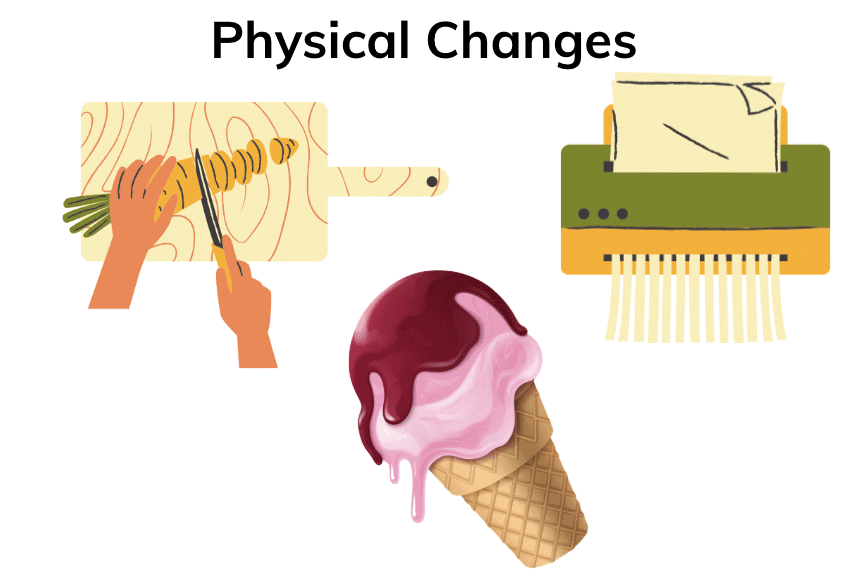
Q2. Predict which of the following changes can be reversed and which cannot be reversed. If you are not sure, you may write that down. Why are you not sure about these?
(i) Stitching cloth to a shirt
(ii) Twisting of straight string
(iii) Making idlis from a batter
(iv) Dissolving sugar in water
(v) Drawing water from a well
(vi) Ripening of fruits
(vii) Boiling water in an open pan
(viii) Rolling up a mat
(ix) Grinding wheat grains to flour
(x) Forming of soil from rocks
Answer: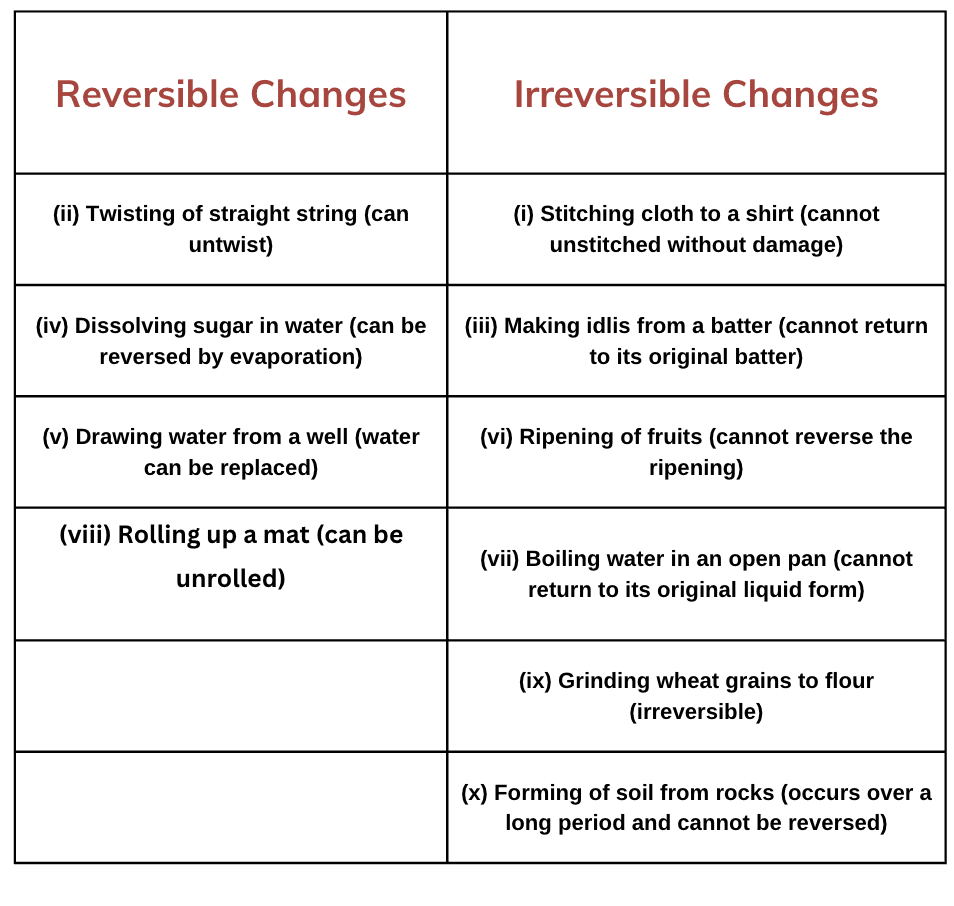
Q3. State whether the following statements are True or False. In case a statement is False, write the correct statement.
(i) Melting of wax is necessary for burning a candle.
Answer: True
(ii) Collecting water vapour by condensing involves a chemical change.
Answer: False
Collecting water vapour by condensing is a physical change.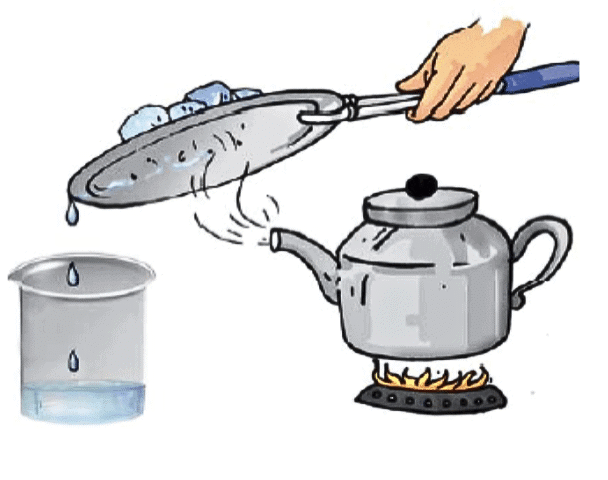
(iii) The process of converting leaves into compost is a chemical change.
Answer: True
(iv) Mixing baking soda with lemon juice is a chemical change.
Answer: True
Q4. Fill in the blanks in the following statements:
(i) Nalini observed that the handle of her cycle has got brown deposits. The brown deposits are due to ________, and this is a ________ change.
Answer: Rusting, chemical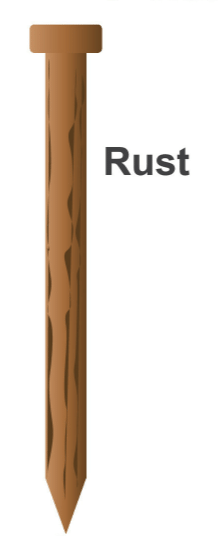
(ii) Folding a handkerchief is a __________ change and can be ________.
Answer: Physical, reversed
(iii) A chemical process in which a substance reacts with oxygen with evolution of heat is called _________, and this is a __________ change.
Answer: Combustion, chemical
(iv) Magnesium, when burnt in air, produces a substance called __________. The substance formed is _________ in nature. Burning of magnesium is a _________ change.
Answer: Magnesium oxide, basic, chemical
Q5. Are the changes of water to ice and water to steam, physical or chemical? Explain.
Answer: Both are physical changes because no new substances are formed when water changes its state. Water changes from a liquid to a solid (ice) when frozen, and from a liquid to a gas (steam) when heated. In both cases, the molecular structure of water remains the same.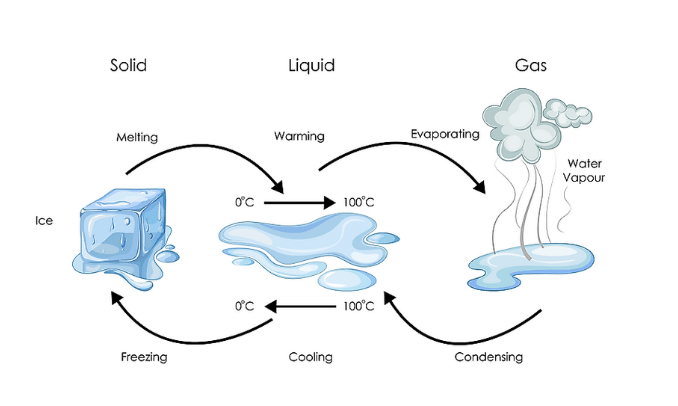
Q6. Is curdling of milk a physical or chemical change? Justify your statement.
Answer: When milk curdles, it changes its chemical structure. The proteins in the milk react with acid (like lemon juice or vinegar) or the natural bacteria (as in the case of yogurt) and form curds. This process is not reversible—once the milk curdles, you cannot change it back to its original form, indicating a chemical change.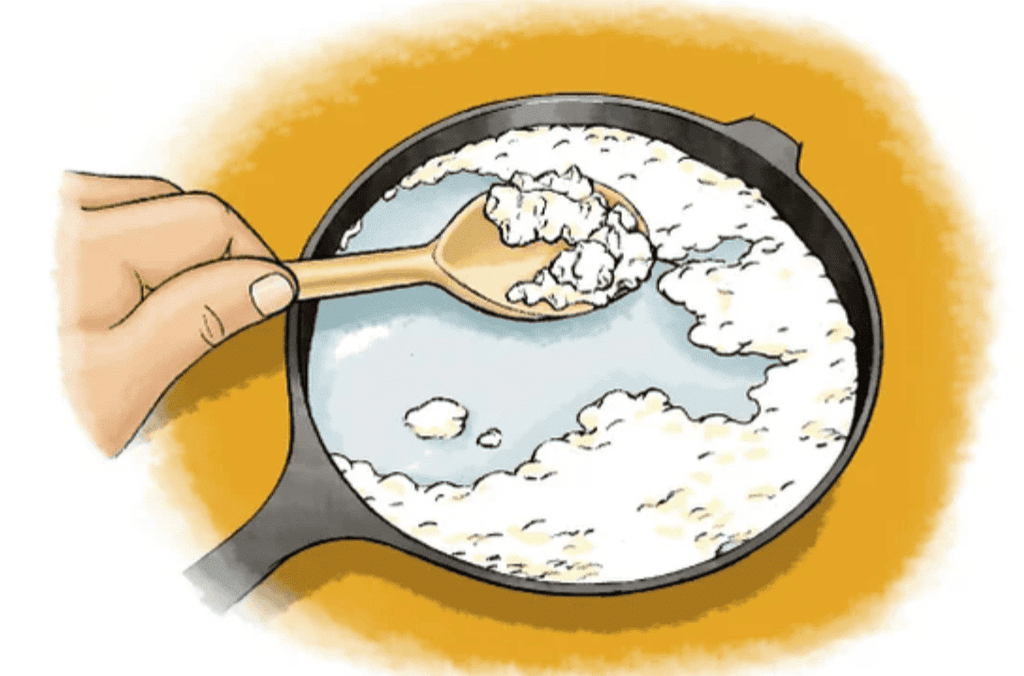
In a physical change, the substance's state or appearance might change, but no new substance is formed. However, curdling results in the formation of new substances , so it is a chemical change.
Q7. Natural factors, such as wind, rain, etc., help in the formation of soil from rocks. Is this change physical or chemical and why?
Answer:The process of soil formation from rocks, influenced by natural factors such as wind, rain, and temperature changes, involves both physical and chemical changes. Here's why:
Physical Change
The breaking down of rocks into smaller particles due to weathering by wind, rain, and temperature is a physical change. The rock is simply being broken into smaller pieces without any change in its chemical composition.
Chemical Change
Over time, water, air, and other substances can react with the minerals in the rocks, leading to the chemical weathering of rocks. For example, rainwater, which is slightly acidic, can react with minerals like calcium in the rocks to form new compounds, like calcium carbonate, causing a chemical change in the rock.
Q8. Read the following story titled ‘Eco-friendly Prithvi’, and tick the most appropriate option(s) given in the brackets. Provide a suitable title of your choice for the story.
Prithvi is preparing a meal in the kitchen. He chops vegetables, peels potatoes, and cuts fruits (physical changes/chemical changes). He collects the seeds, fruits, and vegetable peels into a clay pot (physical changes/chemical changes). The fruits, vegetable peels, and other materials begin to decompose due to the action of bacteria and fungi, forming compost (physical change/chemical change). He decides to plant seeds in the compost and water them regularly. After a few days, he notices that the seeds begin to germinate and small plants start to grow, eventually blooming into colourful flowers (physical change/chemical change). His efforts are appreciated by all his family members.
Answer:
Chopping vegetables, peeling potatoes, and cutting fruits: Physical changes
Collecting seeds, fruits, and vegetable peels into a clay pot: Physical change
Decomposing and forming compost: Chemical change
Germination and blooming flowers: Chemical change
Q9. Some changes are given here. Write physical changes in the area marked ‘A’ and chemical changes in the area marked ‘B’. Enter the changes which are both physical and chemical in the area marked ‘C’.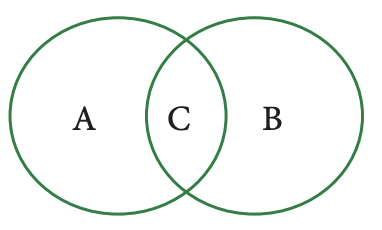
Answer:
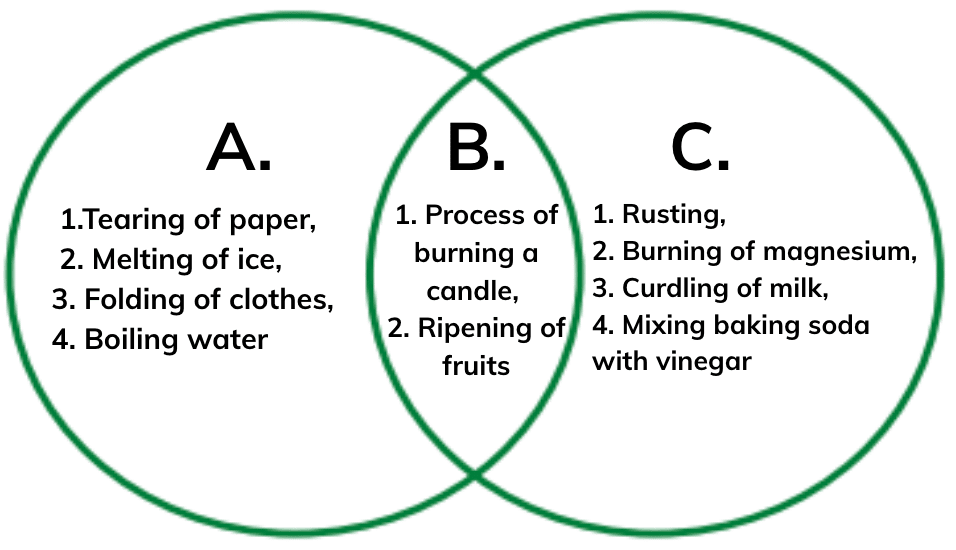
Q10. The experiments shown in Fig. 5.11a, b, c, and d were performed. Find out in which case(s) did lime water turn milky and why?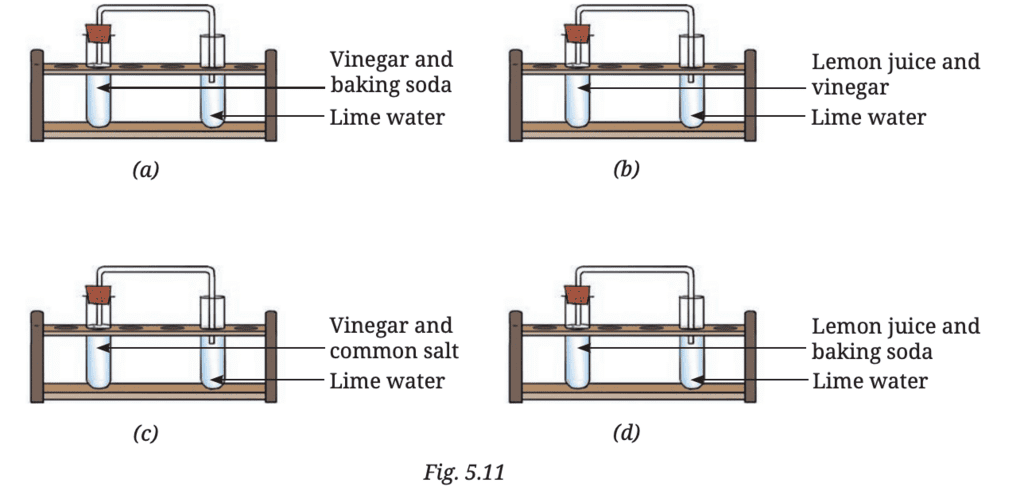
Answer:
Vinegar and Baking Soda (a):
When baking soda reacts with vinegar (acetic acid), it produces carbon dioxide gas (CO₂).
The CO₂ will react with the lime water and turn it milky because calcium hydroxide in lime water reacts with CO₂ to form calcium carbonate.
Vinegar and Common Salt (b):
There is no reaction between vinegar and common salt that produces carbon dioxide.
Therefore, lime water will not turn milky in this case.
Lemon Juice and Vinegar (c):
Both lemon juice and vinegar are acids, but they do not produce carbon dioxide when mixed.
Therefore, lime water will not turn milky in this case.
Lemon Juice and Baking Soda (d):
Baking soda reacts with lemon juice (citric acid) to produce carbon dioxide gas.
The CO₂ will react with the lime water, causing it to turn milky.
Conclusion
Lime water turns milky in experiment (a) (Vinegar and Baking Soda) and experiment (d) (Lemon Juice and Baking Soda) because these reactions produce carbon dioxide, which reacts with lime water to form calcium carbonate.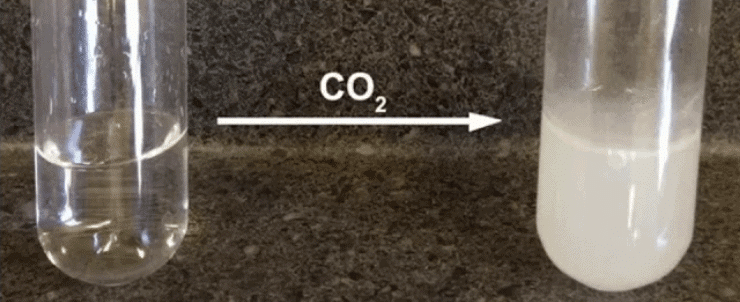
|
85 videos|322 docs|12 tests
|
FAQs on NCERT Solutions for Class 7 Science Chapter 5 Changes Around Us: Physical and Chemical
| 1. What are the main differences between physical and chemical changes? |  |
| 2. Can you provide examples of physical changes that we encounter in our daily lives? |  |
| 3. What are some indicators that a chemical change has occurred? |  |
| 4. How can we distinguish between a physical change and a chemical change in a laboratory setting? |  |
| 5. Why is it important to understand the difference between physical and chemical changes in science? |  |






















